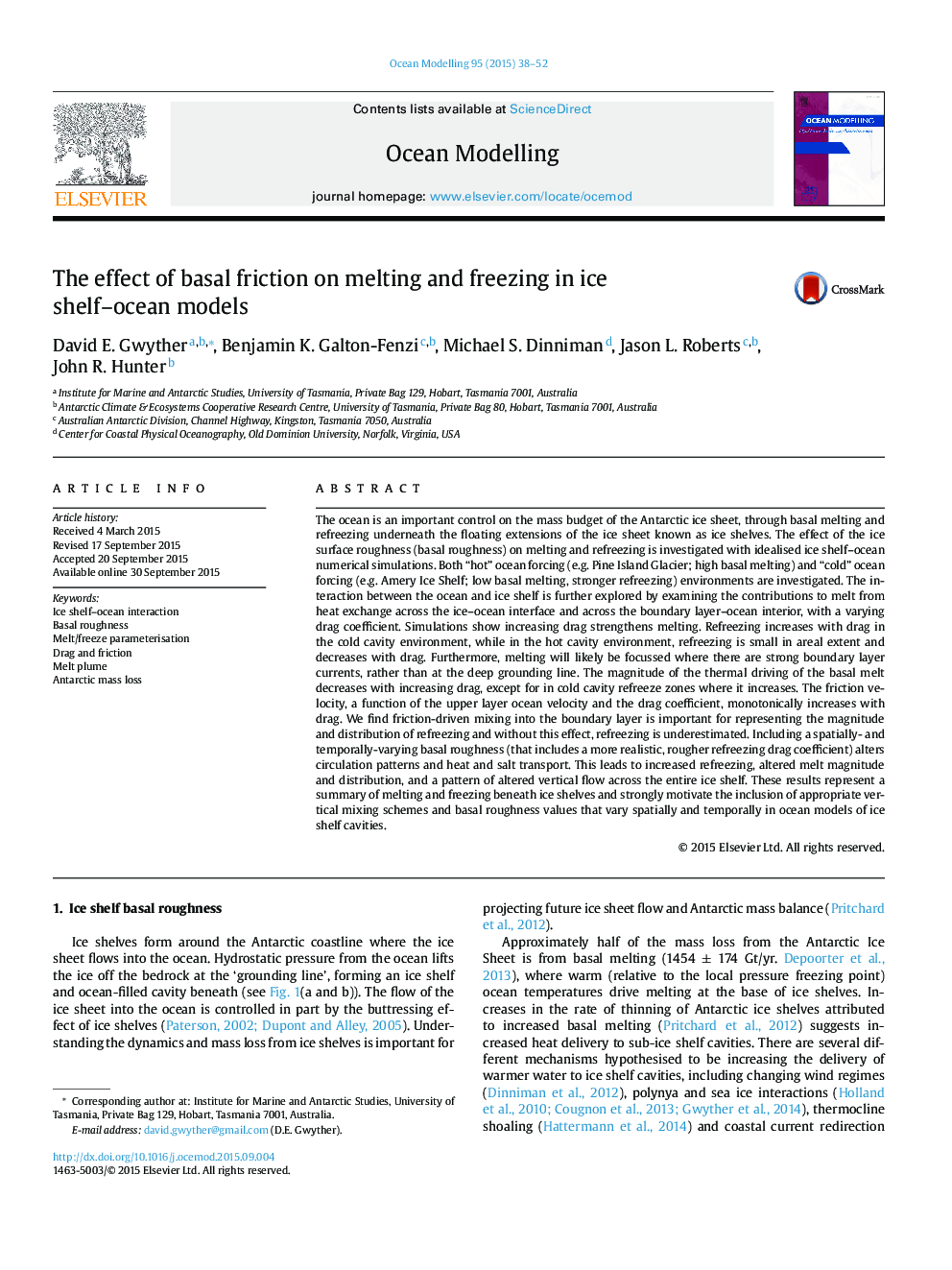| Article ID | Journal | Published Year | Pages | File Type |
|---|---|---|---|---|
| 4552012 | Ocean Modelling | 2015 | 15 Pages |
•Basal melt rate increases with increasing drag, but can plateau at high drag.•Vertical mixing scheme is important for capturing the magnitude of refreezing.•Melting can be more dependent on strong circulation than strong thermal driving.•Realistic refreeze zone roughness affects circulation across entire ice shelf.
The ocean is an important control on the mass budget of the Antarctic ice sheet, through basal melting and refreezing underneath the floating extensions of the ice sheet known as ice shelves. The effect of the ice surface roughness (basal roughness) on melting and refreezing is investigated with idealised ice shelf–ocean numerical simulations. Both “hot” ocean forcing (e.g. Pine Island Glacier; high basal melting) and “cold” ocean forcing (e.g. Amery Ice Shelf; low basal melting, stronger refreezing) environments are investigated. The interaction between the ocean and ice shelf is further explored by examining the contributions to melt from heat exchange across the ice–ocean interface and across the boundary layer–ocean interior, with a varying drag coefficient. Simulations show increasing drag strengthens melting. Refreezing increases with drag in the cold cavity environment, while in the hot cavity environment, refreezing is small in areal extent and decreases with drag. Furthermore, melting will likely be focussed where there are strong boundary layer currents, rather than at the deep grounding line. The magnitude of the thermal driving of the basal melt decreases with increasing drag, except for in cold cavity refreeze zones where it increases. The friction velocity, a function of the upper layer ocean velocity and the drag coefficient, monotonically increases with drag. We find friction-driven mixing into the boundary layer is important for representing the magnitude and distribution of refreezing and without this effect, refreezing is underestimated. Including a spatially- and temporally-varying basal roughness (that includes a more realistic, rougher refreezing drag coefficient) alters circulation patterns and heat and salt transport. This leads to increased refreezing, altered melt magnitude and distribution, and a pattern of altered vertical flow across the entire ice shelf. These results represent a summary of melting and freezing beneath ice shelves and strongly motivate the inclusion of appropriate vertical mixing schemes and basal roughness values that vary spatially and temporally in ocean models of ice shelf cavities.
